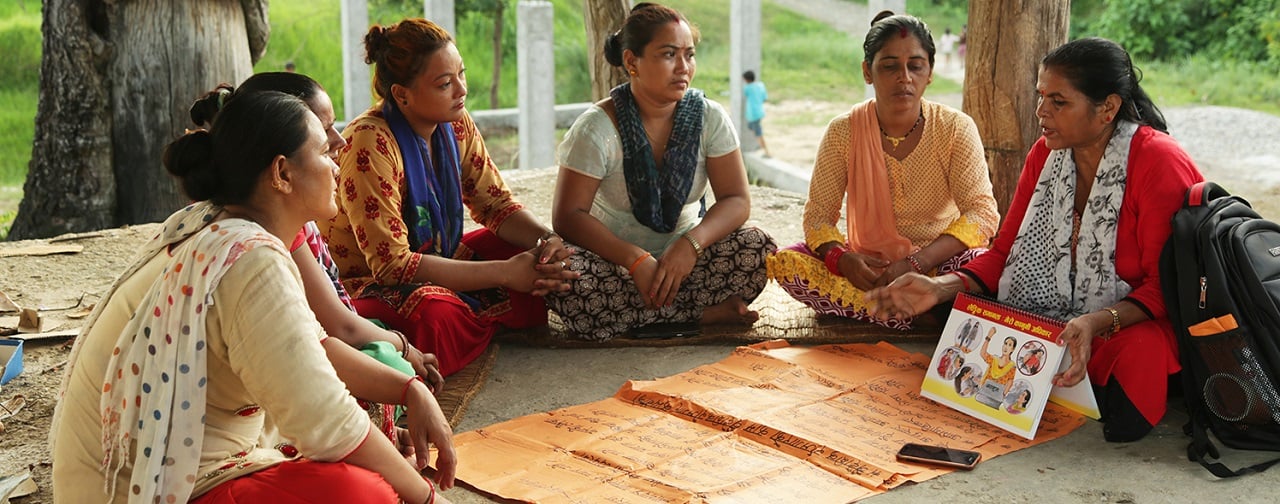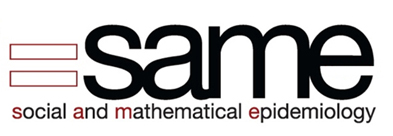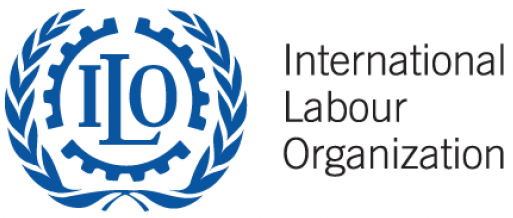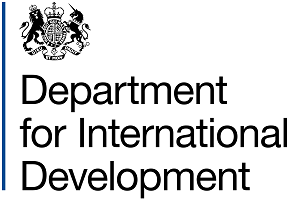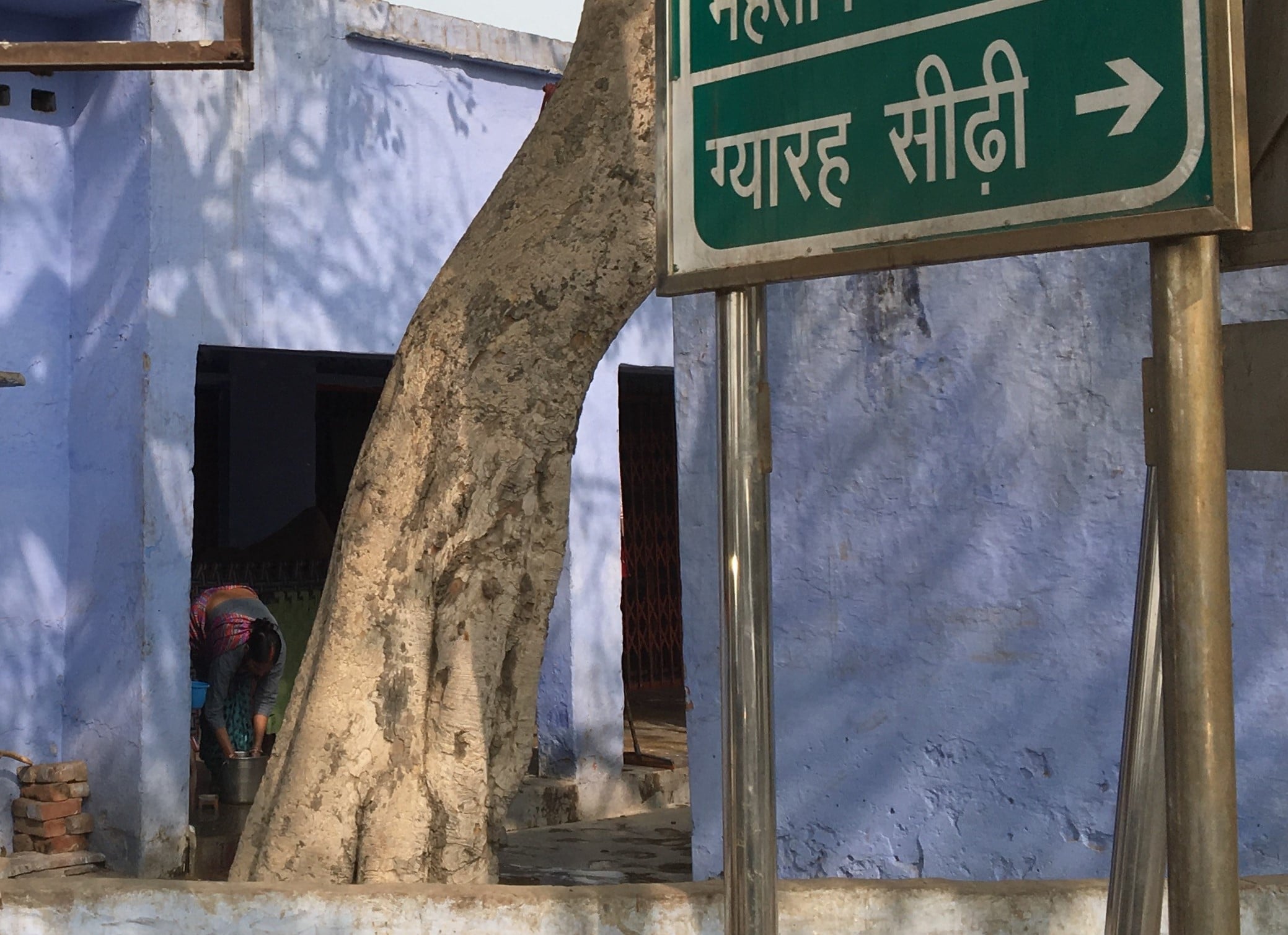Five-year programme of research and evaluation funded by the UK Department for International Development (DFID).
Project overview
The South Asia Work in Freedom Transnational Evaluation (SWiFT) is a five-year programme of research and evaluation funded by the UK Department of International Development (DFID). SWiFT assesses, evaluates and informs the International Labour Organisation’s DFID-funded “Work in Freedom” multi-country intervention to minimise women’s vulnerability to labour trafficking in South Asia and the Middle East.
SWIFT Evaluation Brief Overview
SWIFT Evaluation Research Summary
SWIFT Asia Regional Brief No.1 - New insights for programme & policy - May 2018
Download Human trafficking and exploitation: A global health concern (Zimmerman and Kiss, 2017).
Read What role can empowerment play in preventing exploitation of migrants? by Dr Kiss.
SWIFT Asia Regional Brief No.2 - Insights for intervention development - Oct 2018
SWIFT Asia Regional Brief No.3 - Framework for monitoring interventions - Nov 2018
- Scope and rationale
-
There has been considerable investment in programmes to reduce labour trafficking and address its consequences. However, there is little evidence to inform the design and implementation of interventions.
SWiFT is timely and unique, as it is the first evaluation that follows a large-scale, multi-country trafficking intervention from conception to implementation, using a mixed methods approaches. The work provides a rigorous assessment of the WiF programme logic, assumptions, and activities. Findings will:
- inform policy and practice
- provide insights into the magnitude and characteristics of labour trafficking in the study sites
- identify promising approaches to reduce workers’ vulnerability
- Work in Freedom (WiF)
-
The WiF project is designed and led by the ILO, working in partnership with locally based organisations. WiF’s empowerment and information strategies aim to prevent labour trafficking by enhancing women’s autonomy and by generating wider awareness and adoption of ‘safe migration’ practices and assertion of migrant workers’ rights. Project components include:
- intensive community-based interventions in key migrant ‘source’ areas
- collective organisation of migrant women workers in key migrant-destinations
- awareness-raising targeted at judges, lawyers and police
- promotion of ILO-approved standards and practices for recruitment agencies
- advocacy for high level policy change
SWiFT evaluates the first of these components in Bangladesh, India and Nepal, working with the local organisations:
- Research questions
-
- What puts migrant workers, particularly women, at risk of exploitation? How do these risks vary within and between WiF’s study sites?
- What strategies can people use to protect themselves from exploitation? For whom and in what circumstances will these strategies be most and least successful?
- How does the WiF intervention influence people’s vulnerability to trafficking and opportunities for safe migration and decent labour?
- How did WiF influence the plans, decisions and behaviours of migrants who participated in the programme
- Staff (current and former)
-
Prof Cathy Zimmerman (co-PI). Prof Zimmerman is a founding staff member of the Gender Violence & Health Centre at LSHTM. She is a behavioural and social scientist leading research on migration and health, specifically focussing on human trafficking, mobile populations and gender-based violence.
Dr Ligia Kiss (co-PI). Dr Kiss is trained in social sciences and anthropology, with a MPhil and PhD on Preventive Medicine. Her work at LSHTM includes research and intervention evaluation in Latin America, Asia and Africa, with a focus on trafficking in persons, violence, and migration and health.
Dr Joelle Mak (lead researcher, Nepal). Dr Mak is mixed-methods social science researcher at LSHTM. Her research interests are sexual health, HIV, interpersonal violence and migration, including human trafficking and forced labour.
Tanya Abramsky (researcher). Tanya is an epidemiologist working within the Social and Mathematical Epidemiology group at LSHTM. Her research focuses on violence against women, its causes, consequences and means of prevention.
Christine McLanachan (project manager). Christine is the CEO of Strive Consortium which investigates the social norms and inequalities that drive HIV.
Professor Bayard Roberts (senior research advisor). Prof Bayard is the Director of the Centre for Global Chronic Conditions and undertakes research at LSHTM addressing health determinants, policies and systems of countries experiencing major social change such as those affected by armed conflict and forced migration.
Naomi Stewart (communications officer). Naomi does project-based communications for LSHTM. Her interests are in science communication and science policy, focusing on the nexus between public, policy, and research.
Rosa Arques (programme coordinator)
Dr Samantha Watson (researcher)
- Partners and funders
-
The Gender Violence and Health Centre (GHVC) is based at the London School of Hygiene and Tropical Medicine in London. Researchers from this team are leading the SWiFT project in collaboration with specialist research institutes in Bangladesh, India, and Nepal.
GHVC “works with partners around the world to conduct action-oriented research to better understand the extent, causes and consequences of interpersonal violence, and to identify how prevention and health-service programmes can reduce violence, in order to improve public health and well-being.”
The International Labour Organisation (ILO) operates the Work in Freedom (WiF) programme with DFID funds.
They are “devoted to promoting social justice and internationally recognized human and labour rights, pursuing its founding mission that social justice is essential to universal and lasting peace.”
The Department for International Development (DFID) and UKAID funds SWiFT and WiF.
Their mandate is “to lead the UK’s work to end extreme poverty. They tackle the global challenges of our time including poverty and disease, mass migration, insecurity and conflict. Their work is building a safer, healthier, more prosperous world for people in developing countries and in the UK too.”
Intervention context
The proportion of women migrant workers in Bangladesh has grown rapidly. In 2002, women were just 0.5% of international migrants, but by 2014 reached 17.9% (76,007 women).
This ‘feminization’ of Bangladeshi international migration has generated interest in the gender dimensions of labour migration and vulnerability to trafficking. Assumptions that women’s mobility necessarily involves coercion have resulted in more nuanced analyses of their labour migration.
In Bangladesh, the WiF programme frames women’s labour mobility as a right rather than a compulsion, and trafficking as a risk rather than a certainty. It looks at migration to the Middle East for those who go through formal channels, and migration to India for those who use ‘irregular’ channels.
Aims
In Bangladesh, SWiFT seeks to answer:
- How do participants understand the content of the WiF project, in light of their prior experiences?
- How do their perceptions, awareness and practices change as a result of the programme?
- Is vulnerability to trafficking thereby reduced?
Sites
Research is focused in Narayangani, one of seven districts with high rates of women undertaking cross-border migration. Here, the ILO and local partner OKUP are implementing the WiF intervention in five upazilas (sub-districts). SWiFT evaluation sites include rural, peri-urban and urban contexts to enable comparison.
Research design
1. Longitudinal semi-structured interviews with:
-
30 working-age women migrants at three separate time points over the lifetime of the WiF intervention. Separate but parallel interviews were conducted with respondents’ husbands or fathers.
-
10 WiF programme staff at two time points during the programme lifetime in order to identify any shifts in programme logic, organisation, accessibility and delivery; and to draw out perceptions of factors external to the programme that might facilitate or constrain its impact.
2. Discourse analysis of policy, advocacy and media texts on women’s migration and labour trafficking in Bangladesh. This aims to identify how contemporary representations of women’s labour migration and women labour migrants in Bangladesh may enable or constrain future uptake and extension of the WiF programme throughout the country.
Publications
Research evaluation report [2018]: From Risks to Rights
Working paper [2017]: “To cross a river one needs a bridge”
SWIFT Bangladesh Brief No.1 - Routes to employment in the middle east - May 2017
SWIFT Bangladesh Brief No.2 - Learning from women - (Dec 2018)
Research partners
Drishti – an independent research institute based in Dhaka, Bangladesh
Intervention context
The WiF programme is active in several states in east and south India, focusing on labour mobility within India’s national borders, or ‘internal migration’. Conservative estimates suggest 400 million Indian citizens (30% of the total population) are internal migrants. An estimated 80% of these are women.
Internal migrant workers are vulnerable to entrapment and exploitation but for many, the income is essential for meeting basic needs. Earnings permit modest advancement and accumulation for some, and even a rare opportunity for autonomy. WiF therefore aims to reduce women migrant workers’ vulnerability to labour trafficking while acknowledging the necessity and even the attraction of internal migration.
WiF activities in east India focus on paid domestic work. This highly feminized sector has grown rapidly and is now the largest employer of women in urban India and the second largest in rural India. Workforce composition has shifted a lot, with multiple-employer, non-residential ‘live-out’ arrangements replacing more classic single-employer ‘live-in’ ones.
Aims
SWiFT seeks to understand how and why migrant workers’ vulnerability to trafficking and exploitation are affected by general factors such as informal labour, under-employment, over indebtedness, sub-contracting and out-sourcing and discrimination by gender and caste. It also seeks evidence on how and why some migrant workers elude or overcome these factors while others, similarly positioned, become entrapped in forced labour?
Sites
SWiFT research is focused on the Ganjam district of Odisha State in East India. Odisha has relatively high and growing rates of seasonal and longer-term labour migration. With neighbouring states Jharkhand and Chhattisgarh, Odisha has become a hub for the recruitment of paid domestic workers.
Research design
1. A cross-sectional representative sample survey of 1,255 households and 2,473 individuals in 20 villages across Ganjam District of Odisha at a single time-point. Households and individuals were randomly sampled, and data analysed to assess the applicability of WiF ‘vulnerability-reducing’ measures and to identify factors likely to amplify or constrain WiF impact.
2. Longitudinal semi-structured interviews with:
- 50–60 working-age women who have migrated or intend to migrate at four time points during WiF. Their husbands or fathers were interviewed separately but in parallel to gain insights into gendered experiences and perceptions of migration and labour and of WiF influences on household and individual migration plans, trajectories and outcomes
- 8–12 local policy-makers, elected representatives and officials at two time points during WiF to draw out and contrast beliefs about women’s labour migration; perceptions of safe and unsafe migration practices; and perceptions, experiences and engagement with WiF programme messages over time.
Publications
SWIFT India Brief No.1 - Gender and internal labour migration - Oct 2016
SWIFT India Brief No.2 - Exit scenarios among live in domestic workers - May 2017
SWIFT India Brief No.3 - Occupational Health and Safety - Dec 2018
SWIFT India Brief No.4 - Young female domestic workers perceptions of health & safety - Dec 2018
Research partners
Centre for Women’s Development Studies (CWDS) – an autonomous research centre based in Delhi.
Intervention context
The WiF programme is in five districts in Nepal and targets women interested in migrating for work in the domestic or garment sectors in the Gulf States (Saudi Arabia, Kuwait, Oman, Qatar, Bahrain, and United Arab Emirates). The open border between Nepal and India means that Nepali women working in India are largely unaccounted for.
In 2006/07, women constituted only 0.2% of those granted labour permits to work abroad. By 2013/14, this proportion had risen to 3.1%. However, women constitute about 13% of the country’s absentee population and although this figure includes students and those travelling with husbands, irregular or unofficial migration is considered a primary reason for the discrepancy.
With periodic restrictions on female migration in Nepal, women may be trafficked or smuggled via a third country. To address human trafficking, the Government of Nepal introduced the Foreign Employment and Anti-Trafficking Law and bilateral agreements with destination countries.
Aims
SWiFT is designed to inform the WiF programme and other trafficking prevention programmes on:
-
the nature and scale of adverse migration outcomes
-
factors that increase or decrease a woman’s risk of being trafficked
-
prospective women migrants’ pre-departure knowledge and decision making
In Nepal, SWiFT seeks to answer if WiF’s rationale and assumptions are valid and widely applicable.
Sites
SWiFT is conducted in three of the five WiF districts: Chitwan, Rupandehi and Morang.
Research design
-
Cross-sectional surveys with:
-
521 returned migrant women who migrated (including to India) and have returned to Nepal within the past five years, to capture women’s experiences from initial preparations through to return and possible remigration
-
340 prospective migrant women identified by WiF partners, to capture women’s plans and preparations, including their participation in community awareness activities or formal training
-
Qualitative semi-structured interviews were conducted with approximately 55 of the prospective migrant women who participated in the survey to explore their plans and preparation before the full roll-out of the WiF intervention. They were interviewed again after the WiF two-day pre-decision-making training to explore their experiences and opinions of the training.
Publications
SWiFT Nepal Brief No.1 - Labour migration in Dolakha - Oct 2016
SWIFT Nepal Brief No.2 - Lessons from prospective migrant women - May 2017
SWIFT Nepal Brief No.3 - Transnational female labour migration - Dec 2017
SWIFT Nepal Brief No.4 - Past experiences and future migration intentions -Oct 2018
SWIFT evaluation Nepal research report - Pathways to prevent labour exploitation - Feb 2019
Article [2017]: Mak, J., Abramsky, T., Sijapati, B., Kiss, L., Zimmerman, C. (2017) What is the prevalence of and associations with forced labour experiences among male migrants from Dolakha, Nepal? Findings from a cross-sectional study of returnee migrants. BMJ Open (7).
Article [2018]: Abramsky, T., Mak, J., Zimmerman C., Kiss, L., Sijapati, B. (2018) Migration planning among female prospective labour migrants from Nepal: A comparison of first-time and repeat-migrants. International Migration.
Research partners
Centre for the Study of Labour and Mobility (CESLAM) – a research unit within Social Science Baha, a not-for-profit research organisation in Kathmandu.
